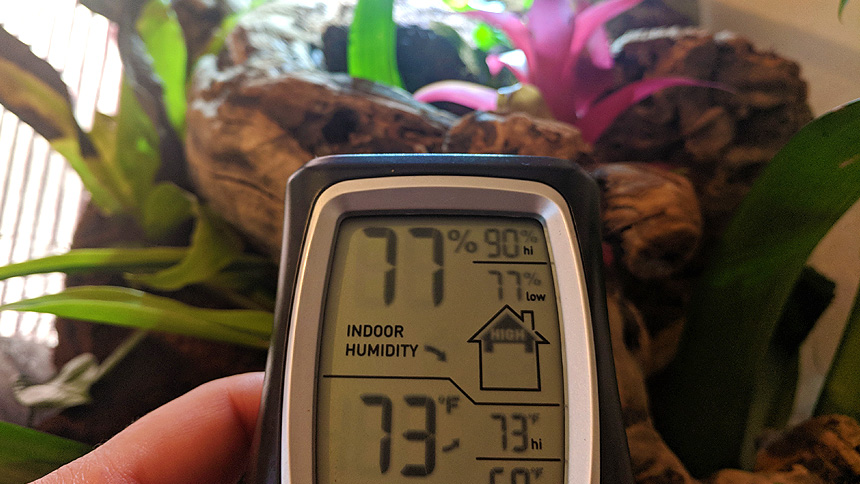
How to Increase Humidity in a Terrarium
Most terrariums are designed with airflow in mind. They have vents on the bottom and a screen lid on top, which allows air to circulate in the enclosure and exit through the top. Because of this, it can be difficult to keep the humidity inside. This is both a good thing and a bad thing.
Reptiles and amphibians need fresh air but, without the proper tools, it’s hard to retain the humidity. That’s the topic of this article; how to increase humidity in a terrarium.
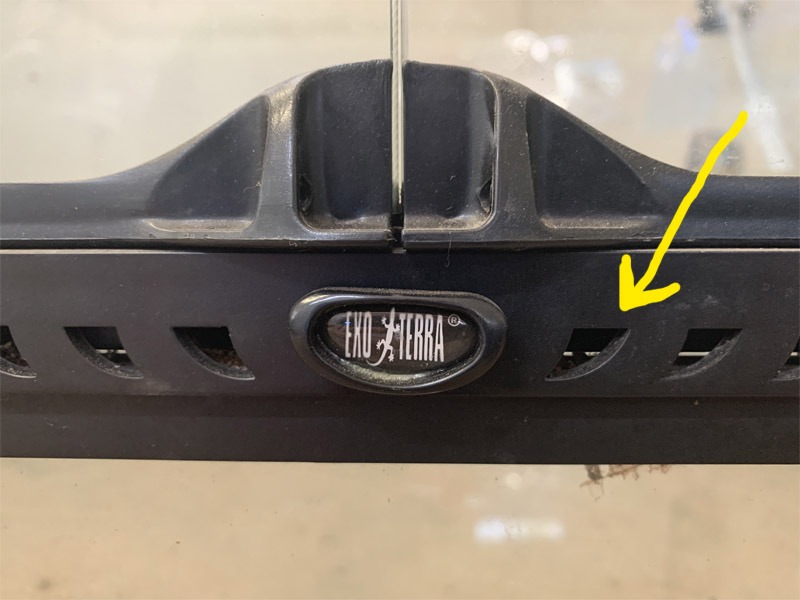
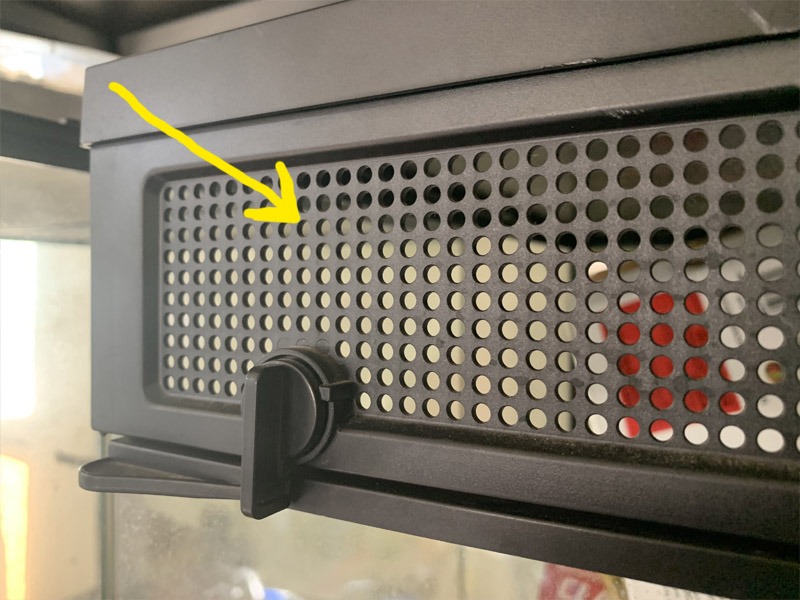
I’ll show you the best ways to increase humidity without sealing your terrarium. From programmable misting systems to moisture-retaining substrates and everything in between, you have an array of options available.
Page Contents
Understanding Humidity in a Terrarium
Before we look at the different ways to increase humidity, it’s important to know the basics; how to check the humidity level in the first place and how temperature affects it. If you already know this information, feel free to skip this section.
Temperature Affects Relative Humidity
You’ve likely heard the term “relative humidity” when watching your local weather station on tv. This refers to the amount of water relative to what the air can hold. Warm air can hold more water than cold air; this means the relative humidity for cold air is higher than that of warm air.
Here is a simple illustration; you have two 10-gallon aquariums, both tanks are half full of water. One aquarium is in a room where the temperature is 50 degrees Fahrenheit and the other one is in a different room where the temperature is 100 degrees Fahrenheit.
Well, the relative humidity will be higher for the aquarium in the room that’s 50 degrees. This is because cold air cannot retain as much water as warm air.
This should go without saying but, you shouldn’t decrease the temperature in your terrarium just to increase the relative humidity. Keep the temperature at the recommended levels for the species of frog you’re keeping.
How to Check Humidity Level
Checking the humidity level of your pet’s enclosure is the first step in determining whether or not it needs adjusting. This is most easily accomplished with a hygrometer.
Hygrometers are cheap and easy to use and you can find them at pet stores, lowes, home depot, Walmart, etc. What you’re most likely to find is a digital hygrometer thermometer combo. You place a sensor inside your reptile’s terrarium and it reads the temperatures and humidity levels. Some brands are stuck to the glass on the inside of the tank.
So, once you have a hygrometer you’re able to read the humidity level and determine whether or not it needs adjusting.
3 Ways to Increase Humidity in a Terrarium
Now that you know about relative humidity and how to check it, let’s discuss the different ways you increase humidity in your pet’s enclosure.
Remember, increasing humidity is all about containing water in your terrarium. The best ways to do this are by decreasing ventilation or simply adding more water.
1. Mist the Terrarium
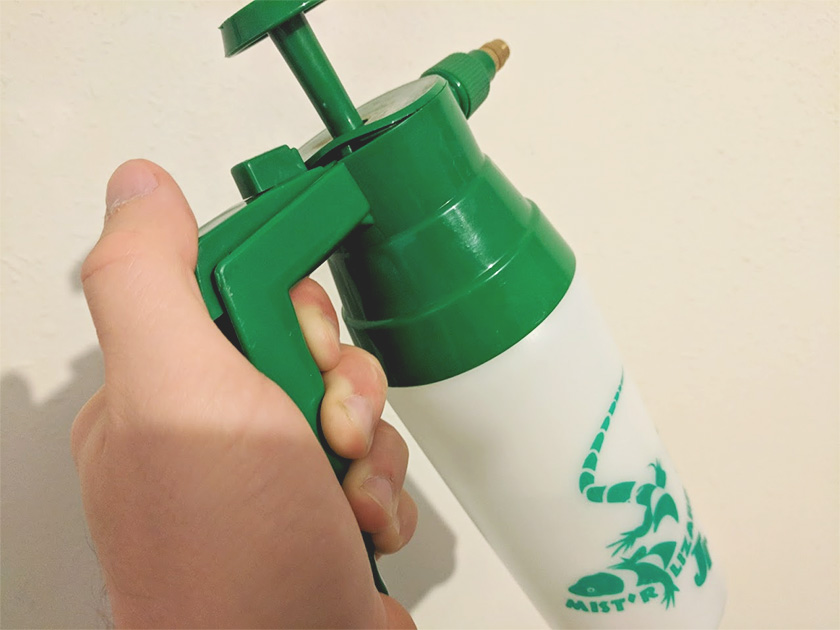
The first and most obvious method for increasing humidity is to mist the terrarium using a spray bottle. Fill the bottle with clean water, open the terrarium, and mist the inside.
Misting the enclosure adds water vapor into the air which increases the humidity. After finishing, close the terrarium and wait a few minutes for everything to settle. Watch your hygrometer and you should see the levels increase.
If your frogs require daily misting, you might consider investing in a portable spray bottle. These misters give you more control over the spray, hold more water, and, most importantly, are sprayed by holding down a button rather than repeatedly squeezing a handle.
Misting Systems
Programmable misting systems are among the most popular and utilized systems for misting terrariums. Once they’re set up, they do all the work for you. And as the first sentence suggests, they’re programmable, allowing you to determine when water is misted and how much is used. Clip the nozzles on the enclosure’s lid, run the hoses to the water tank and let it do the work for you.
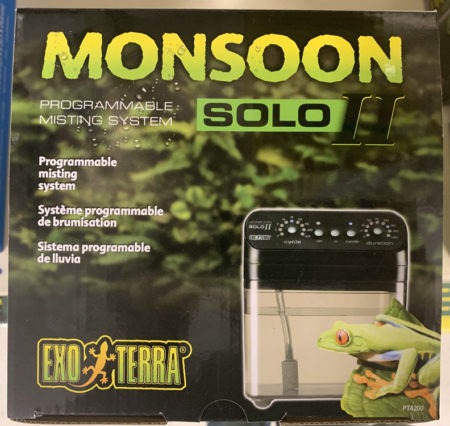
Exo Terra’s Monsoon misting system is a little pricey but, considering the amount of money you’re investing into your frogs, it’s well worth the price. There are more/less sophisticated misting systems you can check out by reading our review of the best reptile misting systems.
Humidifier / Fogger
The most appealing way to increase the humidity, in my opinion, is by using foggers; also known as humidifiers. These systems do exactly as they suggest, they blow fog (water vapor) into an enclosure. This fog looks neat but more importantly, it adds to the humidity level.
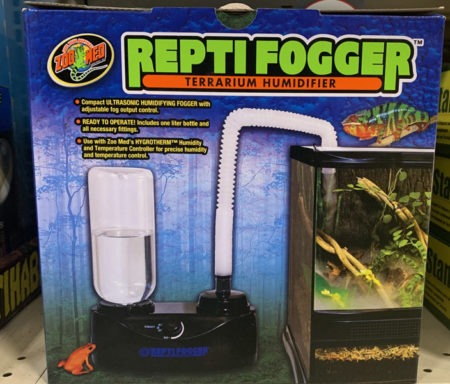
Many keepers utilize foggers in vivarium tank builds, where the fog is blown through a moss-covered landscape to create a more naturalist appearance.
The Evergreen Pet Supplies fogger holds a half-gallon of water, it’s quiet, gives a consistent output, shuts off when the tank is empty, and it allows you to adjust how much fog it outputs.
Waterfalls
Yet another way to increase humidity in a terrarium is by adding a waterfall feature. Adding a waterfall not only gives you the option to add more water into the terrarium, but it circulates the water as well.
As water circulates up the pump and over the waterfall, some of the water is evaporating in the habitat and raises the humidity.
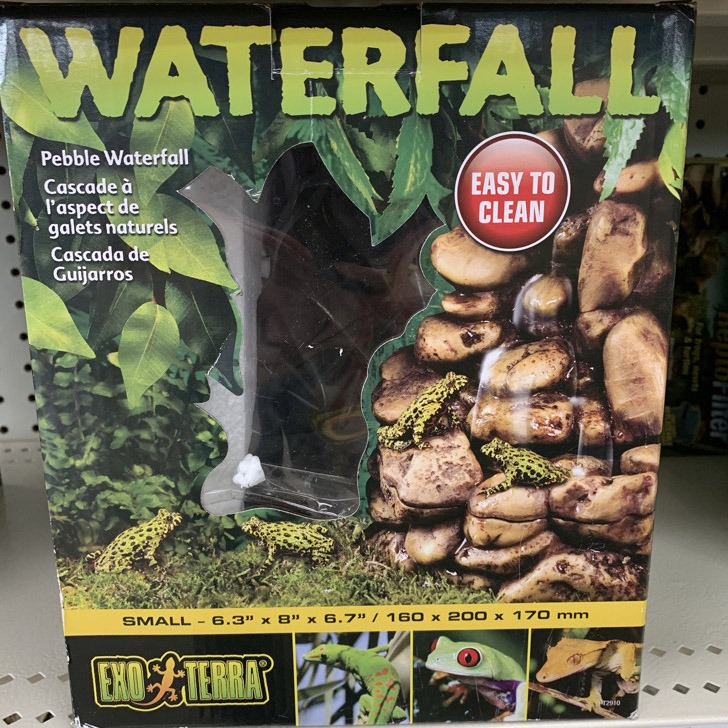
Exo Terra pebble waterfall is an all-in-one device that has a water reservoir to contain water.
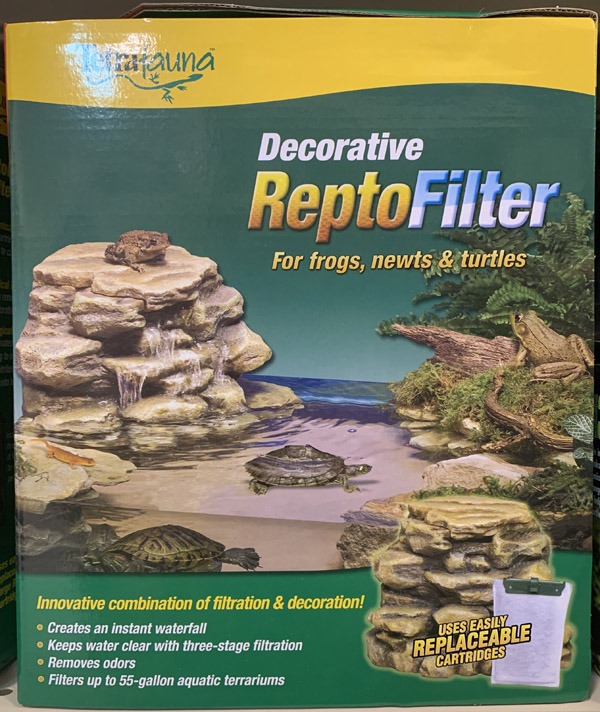
I’ve taken the liberty of adding pictures for two different types of waterfalls. Notice that the pebble waterfall has a reservoir containing the water. It had a pump hidden within the rocks and it pumps the water up and over the pebbles.
The Repto Filter, on the other hand, does not have a water reservoir. It’s meant to sit in the corner of a water container. The pump is also hidden behind the rocks but it requires a larger water area. This would be ideal for terrariums with a partial water bottom.
These aren’t the only devices available! I’ve recently completed a guide on the best waterfalls for reptiles and amphibians. If you’re interested, check that out.
2. Use Moisture Retraining Substrates
Using a non-porous substrate can help increase humidity as well. The substrates you should use largely depend on the species you’re keeping; some species require sandy substrates while others prefer coconut husk, mulch, soil, or something else.
When dealing with a moist substrate, it’s in your best interest to add a drainage layer with a substrate barrier. This is another topic entirely, but the point is to keep your substrate from becoming soggy. It should be damp but not oversaturated.
I encourage you to learn more about substrate if you need a high-humidity enclosure. Having said that, substrates like cypress mulch, orchid bark, and coconut fiber retain a lot of moisture.
Exo Terra has a tropical terrarium substrate called “Plantation Soil” that has great reviews online. I’ve personally never used it so I cannot confirm whether it’s good or not, but it’s worth checking in to.
The depth of the substrate makes a difference too. Having more substrate to retain moisture means you’ll have more humidity. A good depth is around 3 inches. If you have too much substrate it can become over-saturated, which can cause mold to grow. After all, while adding more substrate can help increase the humidity, it’s not worth jeopardizing your frog’s health.
3. Decrease Ventilation
Having air circulation is a good thing but too much will result in a decrease in humidity. Covering all the ventilation will definitely help you retain humidity but it’s not good for your reptiles. You can, however, decrease some of the ventilation.
Decreasing some of the ventilation is the best way to retain humidity in a terrarium; assuming you mist the enclosure, of course. Most terrariums have a screen lid on top, which is where all your humidity is going. You can cover up to half of the screen lid with a barrier.
Its common practice for amphibian owners to place a sheet of glass, plexiglass, or other water-proof material over half the terrarium’s lid. Do a quick google search for a local glass company.
Most are willing to cut a piece of glass to the exact dimensions you need. It’s cheap too, depending on the size. I recently bought a 1/8 inch thick piece of glass measuring 24″ x 18″ and it cost just over $15. I don’t recommend covering more than half the lid with glass. Air circulation is a good thing!
Don’t completely remove all the ventilation. This will result in a harmful environment for your reptile or amphibian!
Other Ways to Increase Humidity in Your Terrarium
As I’ve already mentioned, this information all centers around the species in your terrarium. If you have a frog that does well with either a small water dish or a full water-bottom setup but you’re using the water dish, then change your setup to include more water. Use a large water dish or consider rebuilding their terrarium to include a partial or full-water bottom with cork bark flats and branches for walking.
Make A Custom Waterfall
Adding a waterfall feature is easier than you think. Whether you want to build your own or buy a fancy waterfall decoration, there are plenty of options. And it’s a great way to increase the humidity in your frog’s enclosure.
There are lots of waterfall decorations available online or at your local pet store. Some of these are designed to sit in water, which would be great for frogs that do well in partial or full-water bottom enclosures.
Some contain all the water and there are even a few DIY waterfall kits available.
If you’re up for building your own waterfall, you’re going to need a water pump other materials. Because this is a big topic, I won’t be covering it in this post. I have, however, found a great video that takes you through one man’s process of creating an amazing waterfall. He’s funny, it’s an entertaining video, and it’s definitely worth watching if this is something you want to learn more about.
Rain Chamber & Drippers
Water drippers and rain chambers will greatly increase humidity in your terrarium. As the name suggests, rain chambers are meant to mimic rainfall. In these systems, you’re dealing with a lot of water movement. Drippers simply drip a little water at a time. It’s easier to manage and adds a decent amount of water vapor into the air.
Fun fact, rain chambers are often used when breeding frogs. Because frogs in captivity don’t experience the seasonal conditions of their native habitat, they’re less likely to reproduce in captivity.
This is where the rain chamber comes in. Many species mate during a rainy season, where warm air, higher water levels, and rainfall are plentiful.
People are successfully breeding frogs by replicating two seasons over a period of time. First, a season with cooler temperatures, less food, and less water is held for 4 – 6 weeks. After that, a rise in water level accompanied by rainfall (via rain chamber) and higher temperatures replicate spring-time; the breeding season.
Moss
Using moss in a vivarium build not only adds a naturalist appearance, but also retains water like a sponge. Water is slowly released into the air. Unfortunately, moss isn’t easy to keep alive. You need the right type of moss, proper substrate, and a lot of patience.
It takes a long time to establish. It can take up to a year to achieve a thick, mossy-covered terrarium or at least 4 to 5 months before you can see notice growth.
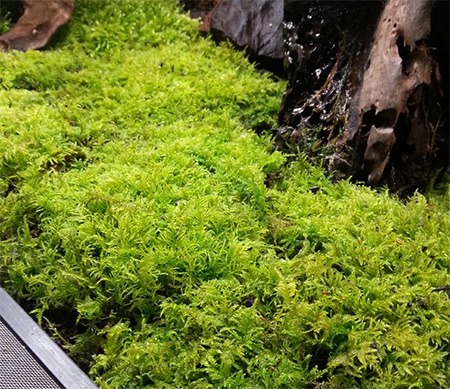
Remember, your pet’s needs should always come first when decorating your terrarium. Thick substrates with moss and waterfalls are pretty, but if you add more humidity than your frog or toad can handle, after a sustained period of time, it will have a negative impact on your pet.
TLDR; How To Increase Humidity in a Terrarium
This section will summarize everything in the guide. Raising humidity in a terrarium may seem like a daunting task but three main things will help you in doing this.
- Increase the amount of water in the habitat by misting, adding a fogger, waterfall, or dripper. More water is essentially the key component. Create a partial water bottom or get a bigger water dish helps too.
- Decrease the ventilation. Perhaps the main reason you’re struggling with humidity is that it’s all escaping through the top of the terrarium. It’s not advised to completely block all ventilation. That can result in a stagnant, harmful environment. Instead, consider covering part (half) of the top of the terrarium with a piece of glass.
- Use moisture-retaining substrates. Coco husk fiber, moss, and ABG mix are great at absorbing and retaining water. Water retention can help boost humidity too.
Proper reptile and amphibian husbandry is the result of creating and maintaining an environment each species is adapted to. Be sure you’re sticking to the recommended temperatures and humidity levels.

8 Comments
A waterfall and a fogger would’t be too much, right? I’m looking into getting 2 Red-eyed tree frogs, and not only do I want to have everything they need but I want a rainforest, nature looking and nice cage. Im thinking the waterfall will fall into a place for the frogs to soak, like a water dish, and I want the fogger too. The fogger would be for dripping water on leaves but also looking flippin awesome. But you said in the guide that too much humidity can be damaging to the frogs, and I understandably dont want that to happen, just making sure the waterfall with a fogger isnt too much.
Foggers are very cool. So are waterfalls! If you adjust the foggers settings appropriately, it the combination might not be too much. A lot of it depends on the terrarium too! How much ventilation there is.
Was just wondering does my Frog Hotel need a small Pump with an Air Stone connected to keep water clean, I have Frog Foliage in the Hotel 🐸🐸
Hey, Lyn! I think I replied to your email. It’s not necessary but won’t hurt anything. Check your email for a better explanation!
Would a fogger work for my columbian red tail boa? I have 180 gallon tank with a screen lid idk how much a glass company would charge for that to cover half of it.im currently having trouble with his humidity.
Yep! It will help but finding something to cover a portion of the screen lid will benefit you the most.
Thank you for the information
Hey no problem!